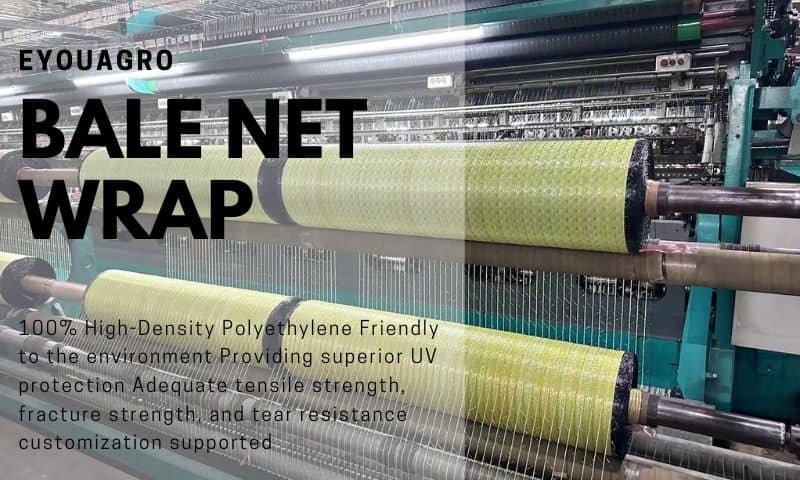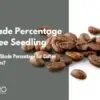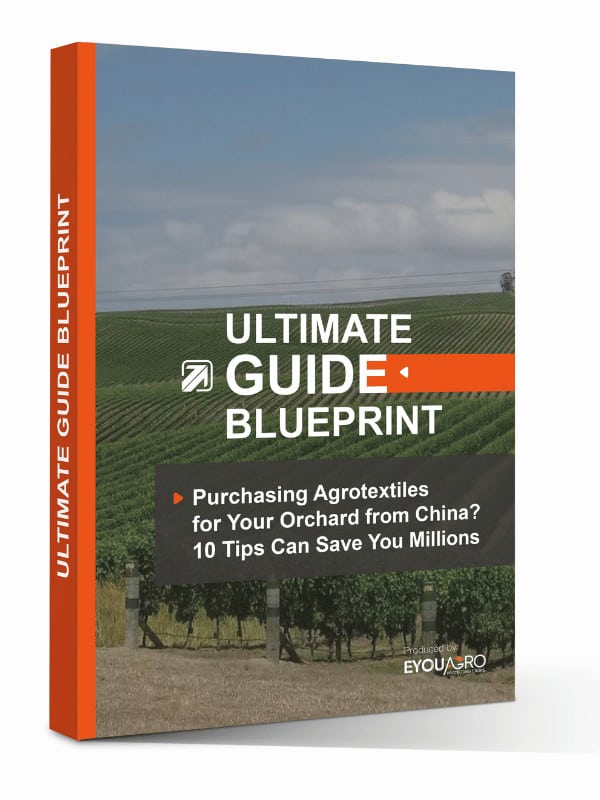Introduction
Agriculture has consistently thrived on innovative advancements, including adopting bale net wrap. This tool, playing an essential role in the modern farming landscape, primarily aids in the efficiency and preservation of harvested crops, such as hay and silage. This article delves into bale net wrap, explicating its significance, benefits, usage, and prospects in agriculture.
Understanding Bale Net Wrap
Definition and function of bale net wrap
Bale net wrap is a synthetic, woven netting material explicitly devised for securing and safeguarding round bales of hay or silage. It serves to ensure the structural integrity of the bale while offering protection against external elements, hence preserving the quality of the forage.

Types of bale net wrap materials
- Polyethylene net wrap: Characterized by its superior tear resistance and UV stabilization, it provides enduring protection against harsh weather elements.
- Polypropylene net wrap: Acclaimed for its high tensile strength and resistance to moisture, polypropylene net wrap ensures the bale remains dry, maintaining its quality over extended periods.
Advantages of using bale net wrap
- Increased bale stability: Round bale protects contribute to enhancing the overall stability of the bale, preventing the risk of disintegration during transport and storage.
- Protection against weather conditions: By creating a barrier against adverse weather conditions, net wraps preserve the nutritional value of the forage.
- Reduction of spoilage and waste: Net wraps minimize exposure to elements that might cause spoilage, leading to a significant decrease in waste.
Factors to Consider when Choosing Bale Net Wrap
Bale size and weight considerations
Opting for a net wrap involves aligning the wrap’s specifications with the bale’s dimensions and weight. A mismatch can result in poor coverage, compromised stability, and eventual degradation of the stored material.

Compatibility with baling equipment
The selected net wrap must be compatible with the baling equipment in use. Incompatibility can cause operational problems, potentially disrupting the wrapping process.
UV resistance and durability
UV resistance and durability are vital attributes, particularly for bales stored outdoors. These features ensure the wrap can withstand prolonged exposure to sunlight without compromising its protective properties.
Environmental Impact and Recyclability
In an era of environmental consciousness, the choice of plastic net wrap should also consider its environmental footprint and potential for recycling, balancing agricultural needs with environmental responsibility.
How Bale Net Wrap Works
Step-by-step process of applying bale net wrap
- Preparation of the baling equipment: The equipment is readied per manufacturer guidelines.
- Placing the bale on the wrapping table: The bale is placed on the table, ensuring proper alignment for efficient wrapping.
- Unrolling and stretching the net wrap: The net wrap is unrolled, stretched, and positioned to envelop the bale.
- Wrapping the bale using appropriate tension: The wrap is wound around the bale using the right tension to ensure firm containment and prevent tears or ruptures.
- Cutting and securing the net wrap: Once adequately wrapped, the net is cut and secured to prevent unwinding.
Importance of proper tension and overlap
Proper tension and overlap are fundamental to successfully applying the wrap, providing optimal protection and stability of the bale. It is also the basis for high-quality silage bales to be wrapped with a layer of bale netwrap.
The necessary pressure can ensure eliminating air pockets. Thus, the bales can be stored for a long time and not be damaged by oxidation.

Common challenges and tips for effective application
It’s essential to anticipate potential challenges during the application process. Understanding these issues, such as tear risks, inadequate overlap, or tension problems, and knowing how to address them, can significantly enhance the wrap’s effectiveness.
Benefits of Bale Wrap in Agriculture
Improved bale integrity and storage efficiency
Net wrap improves bale integrity and storage efficiency, allowing for easier handling, transport, and prolonged storage without losing quality.
Enhanced preservation of forage quality
By providing an effective barrier against the elements, net wrap enhances the preservation of forage quality, ensuring optimal nutritional value is maintained.
Minimization of bale losses and waste
Net wrap significantly minimizes bale losses and waste by reducing exposure to elements causing spoilage, and by keeping the bales intact, it reduces physical losses.
Impact on Feeding and animal health
By maintaining the nutritional quality of the forage, net wrap indirectly contributes to animal health by providing a consistently nutritious feed supply.
Reduction of labor and time requirements
Net wrap simplifies the baling process, reducing labor and time requirements and enhancing farm efficiency.

Best Practices for Using Bale Net Wrap
Proper storage and handling techniques
Proper storage and handling of the net wrap and wrapped bales can prevent premature degradation, maximizing the lifespan and effectiveness of the wrap.
Maintenance and cleaning recommendations
Regular maintenance and cleaning of the baling equipment can contribute to smoother operations and a more successful wrapping process.
Considerations for specific crops and baling conditions
Different crops, bale surfaces, and baling conditions may require specific considerations, such as the type of wrap, tension, and overlap, to ensure optimal protection and preservation.
Common Concerns and FAQs
Q: What is bale net wrap, and how is it used in agriculture?
A: Bale net wrap is a woven, synthetic netting material designed to secure and protect round bales of hay or silage. It is used in agriculture to maintain the structural integrity of bales during transport and storage, protect the bales from adverse weather conditions, and preserve the quality and nutritional value of the forage within.
Q: How does the use of bale net wrap compare to traditional twine wrapping methods?
A: Compared to traditional twine wrapping methods, bale net wrap offers enhanced protection and durability. The netting covers a larger surface area of the bale, providing better containment and reducing the risk of spoilage or damage. Furthermore, bale net wrap often results in tighter, more compact bales, facilitating easier handling, storage, and transport.
Q: How environmentally friendly is bale net wrap? Can it be recycled?
A: Bale net wrap, typically made from synthetic materials like polyethylene or polypropylene, is not biodegradable. However, some manufacturers have started producing net wraps from bio-based or biodegradable materials to mitigate environmental concerns. In terms of recyclability, while the process can be complex due to contamination with organic matter, some recycling facilities accept used net wraps, turning them into plastic lumber or other plastic products.
Q: How long can bale net wrap last? Does it have a shelf life?
A: The lifespan of bale net wrap largely depends on its usage and storage conditions. When used and stored appropriately, the net wrap can protect bales for a year or more. However, prolonged exposure to harsh weather conditions may cause the wrap to degrade faster. The wrap itself, when stored properly, can be kept for several years before use.
Q: Does the use of bale net wrap affect the quality of the forage?
A: The use of bale net wrap helps to preserve the quality of forage by protecting weather elements, pests, and mechanical damage during handling. By minimizing exposure to elements that cause spoilage, net wrap maintains the nutritional value of the forage, contributing to better quality feed for livestock.
Q: Does each bundle have roll carry handles?
Yes, we have installed roll carry handles for each mesh for easy use.
Q: Is there a mark at the end of each roll?
Yes, when each roll of the net is running out, there will be a marked part of the color; this time, you should pay attention to, that this roll of the bale net is about to run out.
Innovations and Future Trends in Bale Net Wrap
Development of bio-based and biodegradable alternatives
Emerging trends are exploring the development of bio-based and biodegradable alternatives to conventional net wraps, aiming to enhance agricultural sustainability.
Integration of advanced technologies for better application
Advanced technologies, like precision wrapping equipment, are being integrated into the bale wrapping process for improved application and efficiency.
Potential Impact on Sustainability and environmental practices
These innovations may have significant implications for sustainability and environmental practices in agriculture, promising a future where efficiency and environmental responsibility coexist.
Case Studies and Success Stories
Boosting Efficiency and Reducing Losses in the Australian Outback
The vast, sprawling fields of the Australian Outback are known for their harsh weather conditions. In this environment, one sheep farm was grappling with massive losses due to poorly protected hay bales. Wind and heat quickly deteriorated the bales, leading to significant fodder spoilage and, subsequently, inadequate nutrition for the flock.
After researching various solutions, the farm owner adopted bale net wrap, specifically the UV-resistant polyethylene net wrap. The net wrap provided superior protection against the harsh sun and windy conditions, securing the bales and preserving the hay’s quality.
The result was a remarkable decrease in fodder losses. With the net wrap’s protection, the farm owner retained hay quality for extended periods, contributing to healthier sheep due to improved forage quality. Additionally, the farm reported higher efficiency in handling and transporting the bales, thanks to the wrap’s contribution to bale stability.

Enhanced Forage Quality in a Dairy Farm in Wisconsin, USA
In the dairy-rich state of Wisconsin, a medium-sized dairy farm faced challenges in preserving silage quality. The farm was using traditional twine to secure the silage bales, but this method failed to provide adequate protection, leading to spoilage and a decrease in nutritional value. This issue affected milk production, given the direct correlation between feed quality and milk yield.
The dairy farm then opted to switch to a polypropylene bale net wrap, hoping to enhance the protection and preservation of their silage bales. The farm’s staff underwent a brief training period to use and apply the net wrap properly, and the baling equipment was adjusted to accommodate the new wrapping method.
After the switch, the farm began to see immediate improvements. The secured silage bales were better preserved, resulting in more nutritious feed for the dairy cows. This led to an increase in milk production and quality, showcasing the impact of high-quality forage on dairy farming. Furthermore, the farm also reported improved efficiency in bale handling and storage, echoing the overarching benefits of adopting bale net wrap in modern agriculture.
Conclusion
Bale net wrap, with its remarkable contributions to agricultural efficiency and crop preservation, undeniably holds an essential role in modern farming. As the sector continues to embrace sustainable practices, it is envisioned that the future of bale net wrap will align with environmental considerations without compromising its benefits.
EyouAgro is at the forefront of agricultural innovation, offering high-quality bale net wraps that ensure efficiency and sustainability in farming. Our net wraps provide exceptional protection for hay and silage bales, preserving their nutritional value and integrity.
We invite you to experience the benefits of EyouAgro’s bale net wraps. Join us in revolutionizing agriculture. Visit our website or get in touch for more information. Together, we can transform farming practices.









